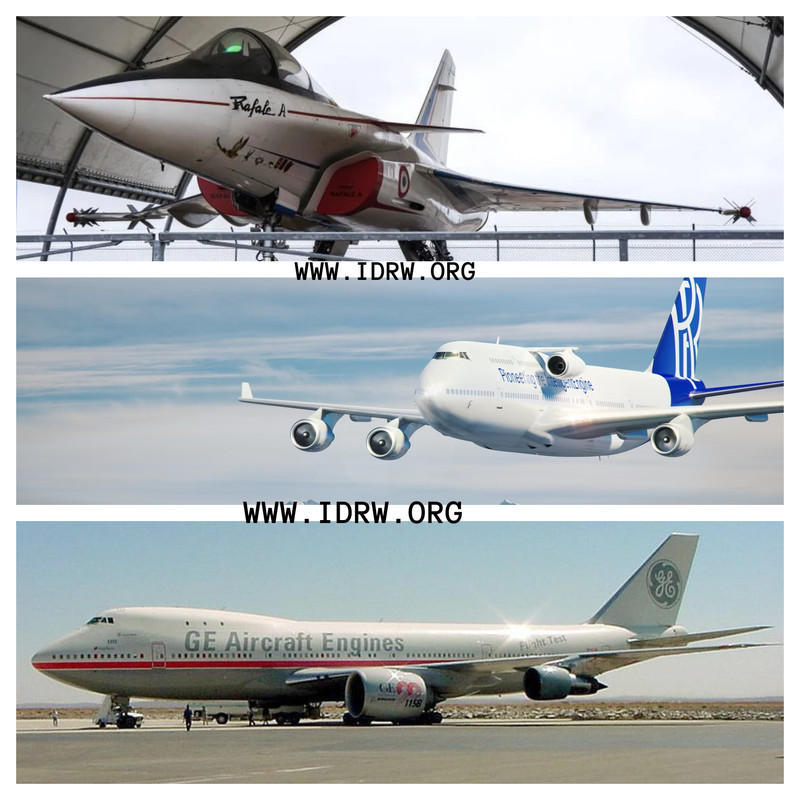SOURCE: RAUNAK KUNDE / NEWS BEAT / IDRW.ORG


The Gas Turbine Research Establishment (GTRE), India’s premier organization for the development of jet engines, is currently in discussions with several foreign aerospace Original Equipment Manufacturers (OEMs) for the joint development of a new 110kN engine to power India’s ambitious 5th-generation Advanced Medium Combat Aircraft (AMCA) program. Each potential partner has presented unique proposals, including the use of modified flying test-bed platforms, adding an interesting dynamic to the engine development process.
Flying test-beds are crucial in testing jet engines under real-world conditions. These aircraft allow engineers to gather in-flight data, monitor engine performance, and identify areas for improvement. The use of flying test-beds also provides a controlled environment for testing new engines before they are integrated into the actual fighter jet.
In the case of the AMCA engine development, Safran, Rolls-Royce, and GE Aerospace—three of the top contenders for collaboration—have each offered their own modified flying test-bed platforms as part of their proposals.
Safran, a potential partner in the 110kN engine program, has proposed using the Dassault Rafale as a flying test-bed. Safran has a history of utilizing the Rafale for testing, as the aircraft was previously used to validate the M88-3 engine, which currently powers the Rafale. However, the original Rafale A prototype, which served as the test-bed for the M88-3, has since been retired and is now an exhibit at the Musée de l’air et de l’espace, a French aerospace museum in Paris.
Despite the retirement of Rafale A, Dassault’s active Rafale aircraft have been used by Safran and Thales to test new improvements, and the platform is likely to be proposed with modifications based on the older FI configuration. Safran’s proposal is compelling, as it offers a fighter jet platform that is close to the AMCA in terms of performance and technology.
Rolls-Royce, another strong contender, has proposed using its Boeing 747 flying test bed for the AMCA engine development. The 747, a dedicated flying test platform for Rolls-Royce, has been used to test a variety of engines, including the Trent series and the Rolls-Royce Pearl engines. The 747’s four-engine configuration, large tail, and wide range of airspeed and altitude capabilities make it an ideal test platform.
The redundancy provided by the 747’s multiple engines allows engineers to safely test new engines, even in case of failure. Rolls-Royce’s 747 test-bed offers flexibility and safety, ensuring that the 110kN engine can undergo a wide range of testing before being integrated into the AMCA.
GE Aerospace has proposed using its Boeing 747-400 flying test bed, which is currently in service and is being used to test the GE9X, the largest jet engine ever built. Like Rolls-Royce’s 747, GE’s 747-400 offers a high degree of redundancy and safety, allowing for comprehensive testing of new engines.
Though GE Aerospace is seen as the least favored partner for the AMCA engine program due to other geopolitical and technical factors, the company’s proposal is still a strong one. The GE 747-400 test-bed has a proven track record of testing advanced jet engines and could provide GTRE with a reliable platform for evaluating the new 110kN engine.
While the initial tests of the 110kN engine will take place in the OEMs’ home environments, further trials will need to be conducted in India’s diverse climate. India’s humid, dry, and high-altitude conditions present unique challenges for engine performance. It is essential for GTRE and its foreign partner to optimize the engine for these conditions, as they will play a key role in maintaining the AMCA’s stealth and operational capabilities.
The collection of data from these varied environments will provide crucial insights that can be used to further fine-tune the engine, ensuring that it meets the performance standards required for a 5th-generation fighter jet.
Ultimately, the choice of a partner and the flying test-bed platform will have a major impact on the success of the AMCA engine program. As India seeks to develop a cutting-edge engine that can operate across diverse climates and ensure the stealth capabilities of the AMCA, these flying test-bed solutions will be crucial in achieving the desired outcomes.
NOTE: Part-I of the Three-Part Series on Flying Test-Beds for the 110kN engine for AMCA and Kaveri Engine
NOTE : Article cannot be reproduced without written permission of idrw.org in any form even for YouTube Videos to avoid Copy right strikes. Websites doing illegal reproductions will get DMCA and Legal Notices.